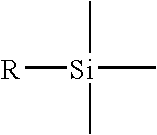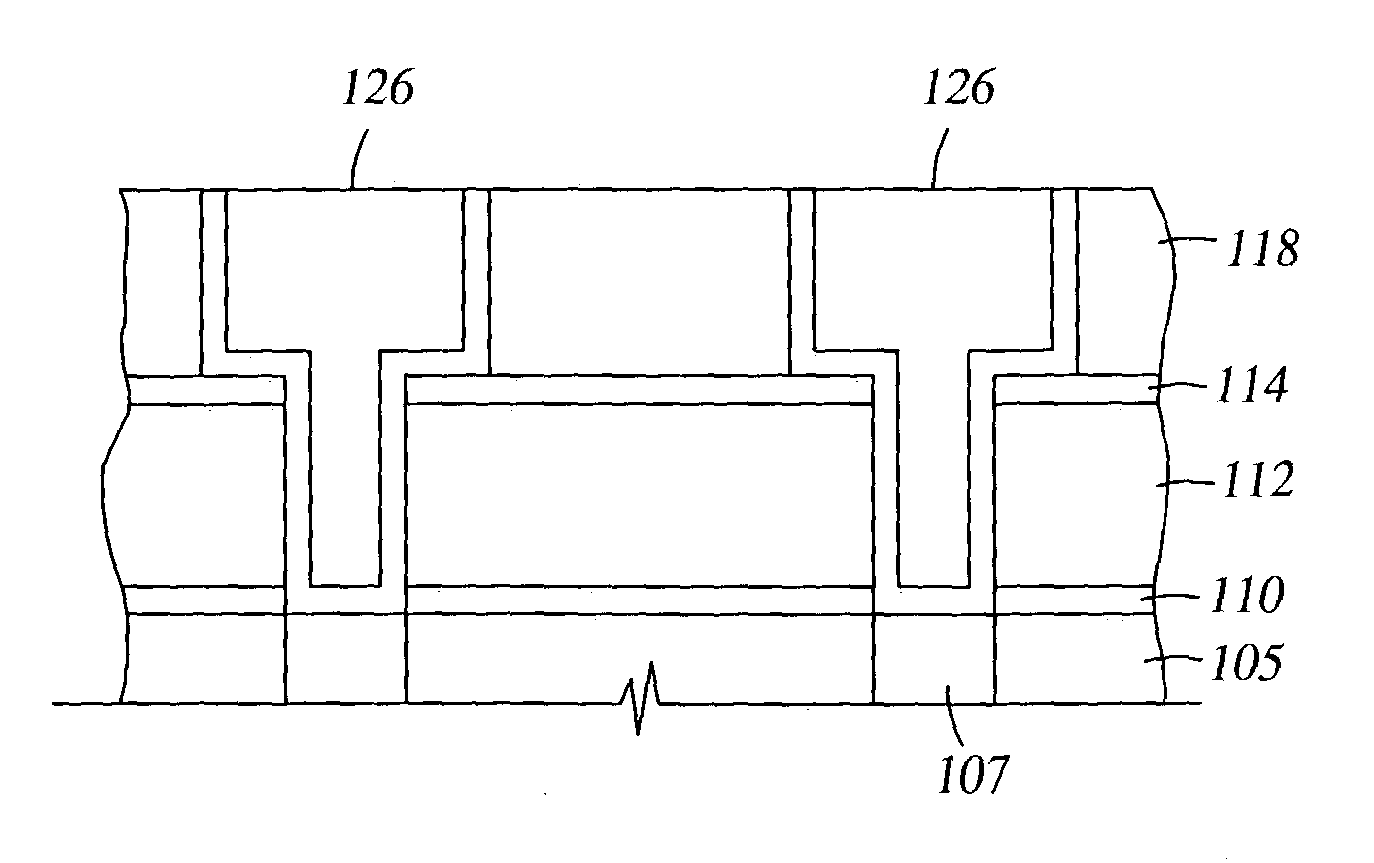Method of improving stability in low k barrier layers
a barrier layer and stability technology, applied in the manufacture of cables/conductors, semiconductor/solid-state devices, coatings, etc., can solve the problems of short circuit formation, difficult etching of copper and achieving precise patterns, and failure of devices,
- Summary
- Abstract
- Description
- Claims
- Application Information
AI Technical Summary
Problems solved by technology
Method used
Image
Examples
Embodiment Construction
[0098] Organosilicon compounds described herein were deposited as barrier layers on substrate surface and analyzed. In one example, a silicon carbide film was deposited from a diphenylsilane compound and compared to a silicon carbide film from a conventional silicon carbide precursor, trimethylsilane.
[0099] Both diphenylsilane and trimethylsilane precursors were deposited by introducing diphenylsilane or trimethylsilane at about 500 mg / min into the processing chamber, introducing helium at about 500 sccm into the processing chamber, generating a plasma in the processing chamber by applying 100 watts of RF energy, maintaining the substrate temperature at about 290.degree. C., maintaining the chamber pressure at about 3 Torr to deposit a silicon carbide layer. The heater spacing was about 450 mils from the substrate surface.
[0100] The deposited films were examined and analyzed for dielectric constant and barrier layer diffusion. The diphenylsilane silicon carbide film had a measured d...
PUM
| Property | Measurement | Unit |
|---|---|---|
| Dielectric polarization enthalpy | aaaaa | aaaaa |
| Frequency | aaaaa | aaaaa |
Abstract
Description
Claims
Application Information
 Login to View More
Login to View More - R&D
- Intellectual Property
- Life Sciences
- Materials
- Tech Scout
- Unparalleled Data Quality
- Higher Quality Content
- 60% Fewer Hallucinations
Browse by: Latest US Patents, China's latest patents, Technical Efficacy Thesaurus, Application Domain, Technology Topic, Popular Technical Reports.
© 2025 PatSnap. All rights reserved.Legal|Privacy policy|Modern Slavery Act Transparency Statement|Sitemap|About US| Contact US: help@patsnap.com



